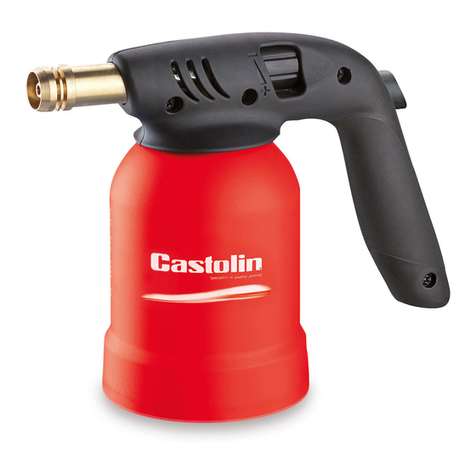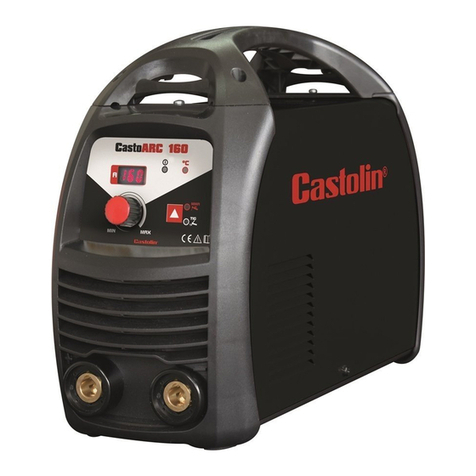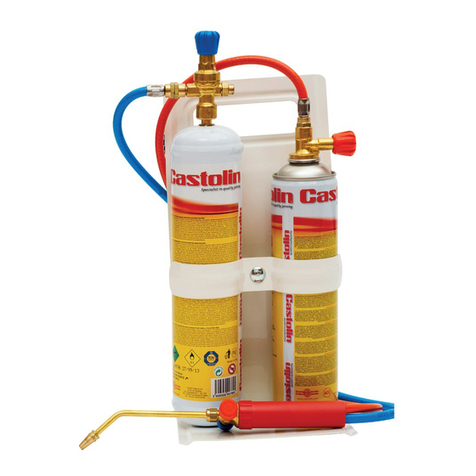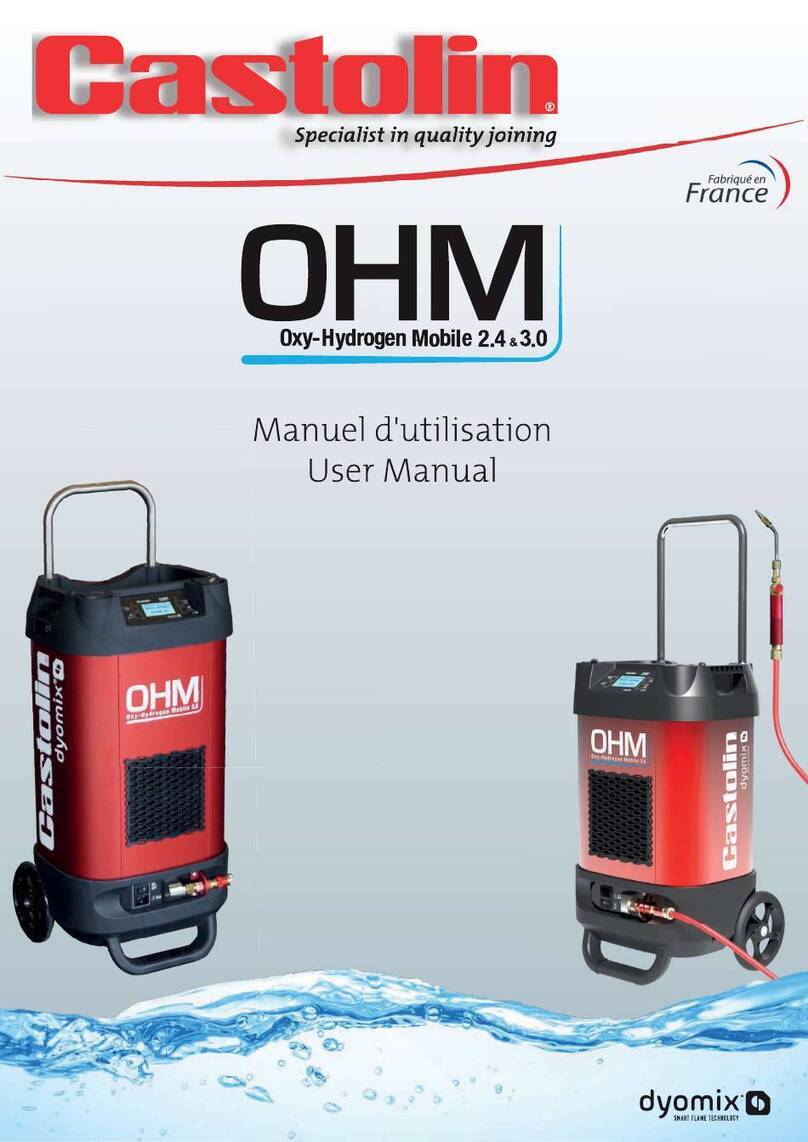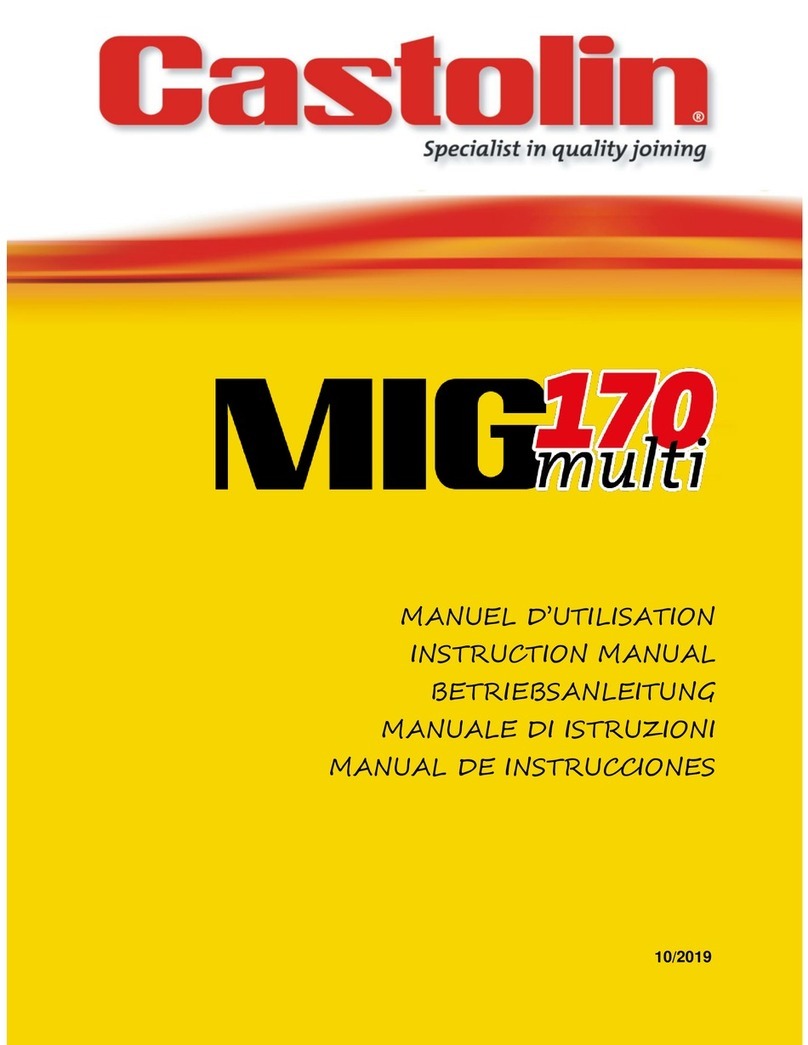
GB - USER’S MANUAL
1. SAFETY INSTRUCTIONS
In its conception, specification of parts and production, this machine is in compliance with regulation in force, namely
the European Standards (EN) and internationals (IEC).
There are applicable the European Directives “Electromagnetic compatibility” and “Low voltage”, as well as the standards IEC
60974-1 / EN 60974-1 and IEC 60974-10 / EN 60974-10.
1.1 ELECTROMAGNETIC COMPATIBILITY
The user is responsible for installing and using the arc welding equipment according to the manufacturer’s instructions.
If electromagnetic disturbances are detected, then it shall be the responsibility of the user of the arc welding equipment to
resolve the situation with the technical assistance of the manufacturer. In some cases this action may be as simple as connect to
earth the welding circuit. In other cases it could involve constructing electromagnetic screens enclosing the welding power
source and the work complete with associated input filters. In all cases, electromagnetic disturbances shall be reduced to the
minimum to avoid troubles.
Before installing arc welding equipment the user shall make an assessment of potential electromagnetic problems in
the surrounding area. The following shall be taken into account:
a) Supply cables, control cables, signaling and telephone cables, above, below and adjacent to the arc welding equipment;
b) Radio and television transmitters and receivers;
c) Computer and other control equipment;
d) Safety critical equipment, e.g. guarding of industrial equipment;
e) The health of the people around, e.g. the use of pacemakers and hearing aids;
f) Equipment used for calibration or measurement;
g) The immunity of other equipment in the environment. The user shall ensure that other equipment being used in the
environment is compatible. This may require additional protection measures;
h) The hour of day when welding or other activities are to be carried out.
1.1.1 Methods of reducing emissions
Connection to mains
Arc welding equipment should be connected to the input supply system according to the manufacturer’s
recommendations. If interference occurs, it may be necessary to take additional precautions such as filtering of the supply
system. Consideration should be given to shielding the supply cable of permanently installed arc welding equipment, in
metallic conduit or equivalent. Shielding should be electrically continuous throughout its length. The shielding should be
connected to the welding power source so that good electrical contact is maintained between the conduit and the welding
power source enclosure.
Welding cables
The welding cables should be kept as short as possible and should be positioned close together, running at or close to
the floor level.
Equipotent bonding
Bonding of all metallic components in the welding installation and adjacent to it should be considered. However,
metallic components bonded to the work piece will increase the risk that the operator could receive an electric shock by
touching these metallic components and the electrode at the same time. The operator should be insulated from all such bonded
metallic components.
Work piece earth connection
When the work piece is not bonded to earth for electrical safety, nor connected to earth because of its size and
position, e.g. ships hull or building steelwork, a connection bonding the work piece to earth may reduce emissions in some, but
not all instances. Care should be taken to prevent the earthling of the work piece increasing the risk of injury to users,
or
damage
to other electrical equipment. Where necessary, the connection of the work piece to earth should be made by a direct
connection to the work piece, but in some countries where direct connection is not permitted, the bonding should be
achieved by
suitable capacitance, selected according to national regulations.






